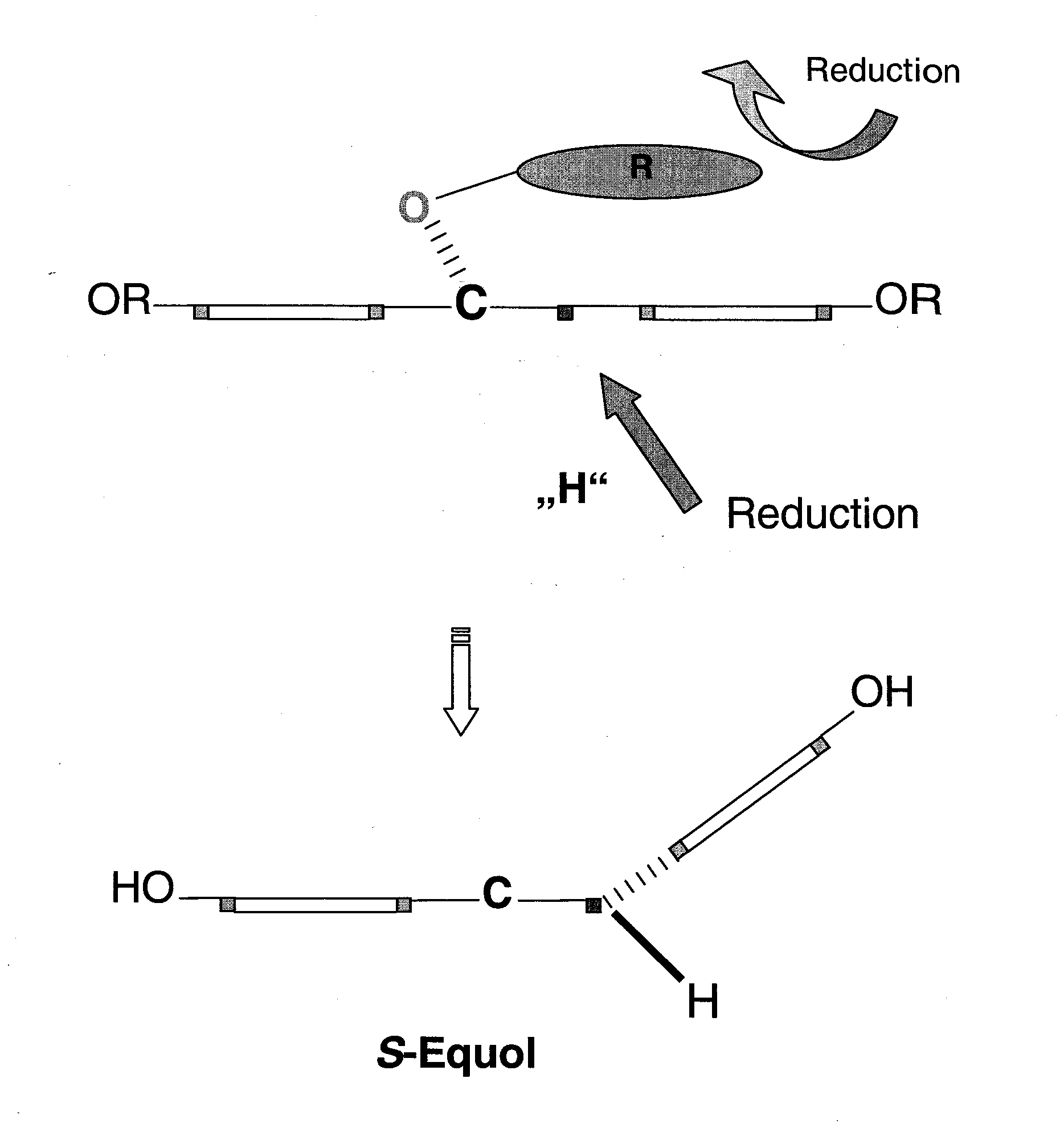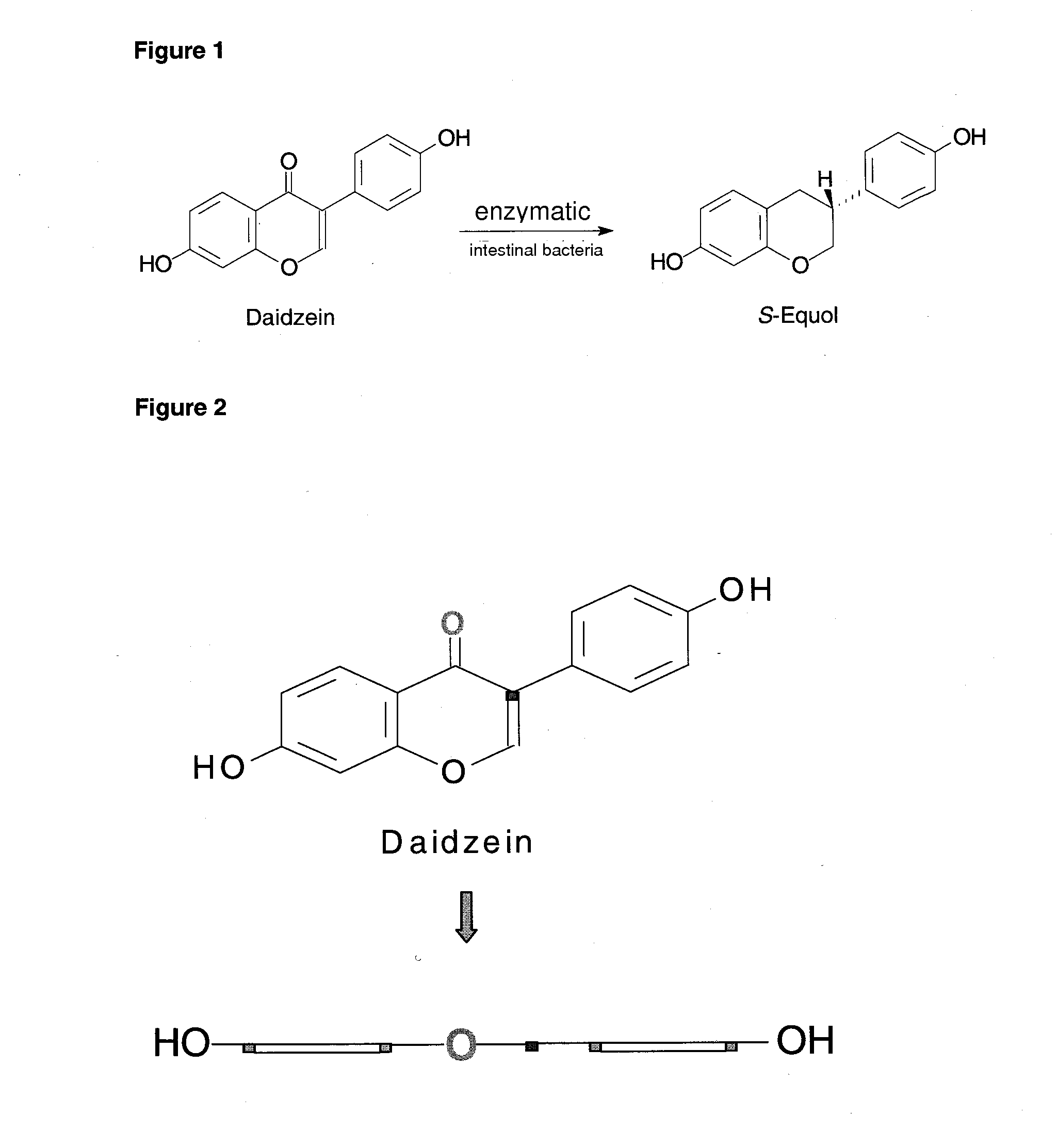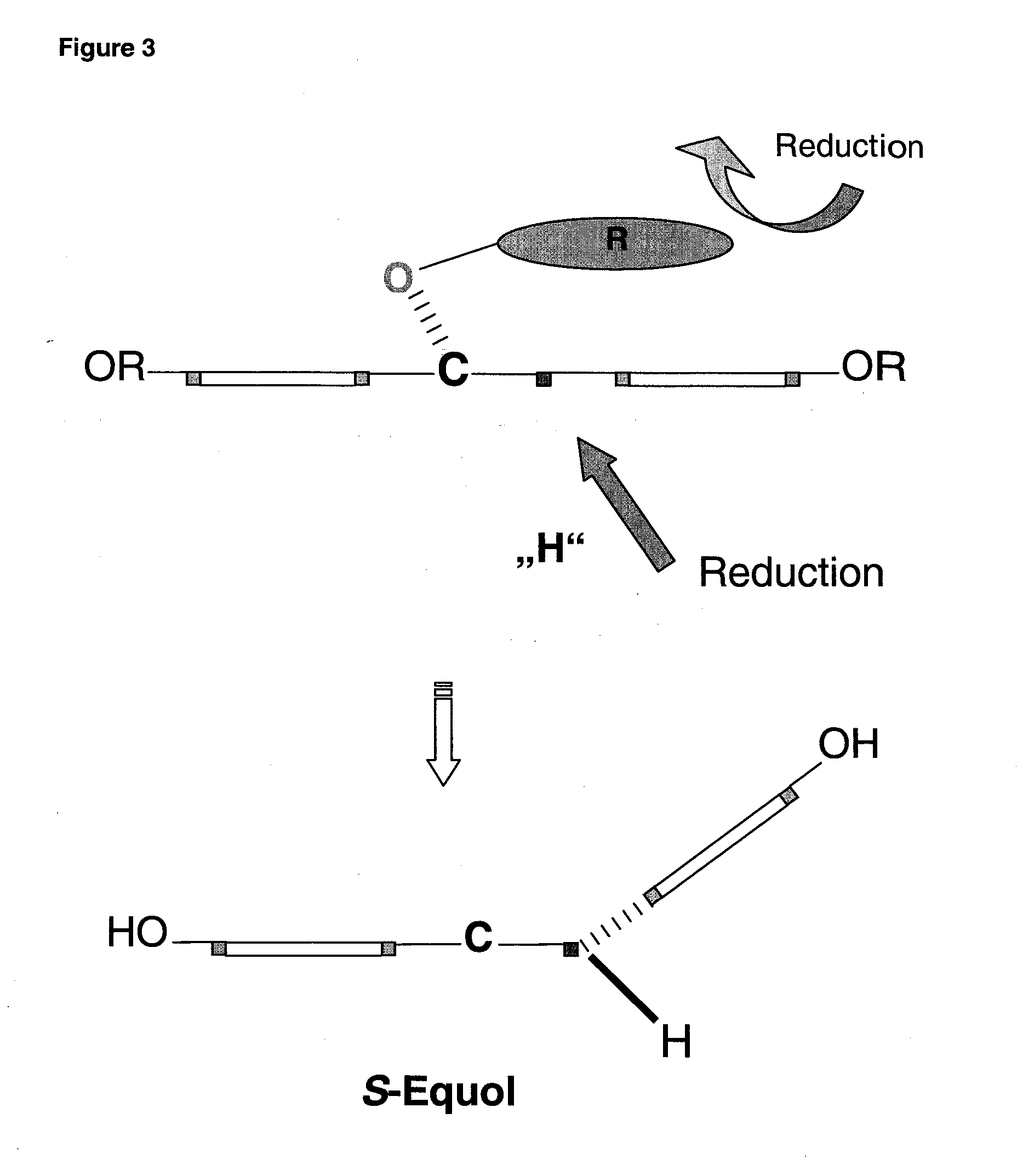Synthesis of equol
a technology of isoflavanes and equol, which is applied in the field of isoflavanes production, can solve the problems of low efficiency of organic synthesis, low cost, and inability to meet the needs of industrial production, and achieves the effects of simple and cost-efficient production, low cost, and increased workload and thus cost of industrial production
- Summary
- Abstract
- Description
- Claims
- Application Information
AI Technical Summary
Benefits of technology
Problems solved by technology
Method used
Image
Examples
example 1
Reduction of the 4-keto-function of daidzein (1) to the 4-(R)-hydroxy group
[0048]To a solution of (S)—CBS-oxazaborolidin (0.1 eq) in THF (tetrahydrofurane), a solution of N-ethyl-N-isopropylanilin-borane (1 eq) in THF was added. To this mixture, a solution of daidzein (1 eq) dissolved in THF was added slowly and dropwise at 25° within 1.5 hours. Subsequently, the reaction mixture was stirred for additional 10 minutes, quenched carefully with methanol and stirred for 30 minutes. The solvent was removed in a rotary evaporator and the product was purified by flash chromatography on a silica gel (230-400 mesh) with the eluant ethyl acetate / hexane (4:1 v / v). The enantiomeric purity was determined by HPLC in a chiral column to 96% ee (25 cm Chiralcel OD-H chiral column; iso-PrOH / hexane: 1 / 99; flow rate: 0.3 ml / min; detection: 254 nm); the yield was 78% daidzein-4-ol (2).
example 2
Protection of the 4,7,4′-hydroxy groups of dihydrodaidzein
[0049]Especially the 4-hydroxy group is protected with a bulky substituent in order to sterically block the R-side of the molecule. As a substituent, bromobenzylbromide is used. Besides the 4-hydroxy group, also the other two aromatic hydroxy groups are etherified. 3.5 eq NaH were stirred into water-free THF with 0.35 eq p-BrC6H4CH2Br and 0.1 eq dihydrodaidzein (2) obtained according to example 1 in THF under a backflow for 12 hours. After flash chromatography at a silica gel (230-400 mesh) with the eluant ethylacetate / hexane (4:1 v / v), the yield was 80% daidzein-4,7,4′-tri-bromobenzylether (3).
example 3
Reduction of the 2,3-double bond in chromene system (3) with 9-BBN
[0050]To a solution of compound (3) (1 eq) in water-free THF, 1 eq 9-BBN was added dropwise at room temperature under stirring and nitrogen atmosphere. After stirring for 1 hour at room temperature, 2 n formic acid were added dropwise and further stirred for 1 hour at a maximum temperature of 30° to 40° C. The reaction mixture was diluted with ether and washed twice with water. The organic supernatant was evaporated by rotating and purified by flash chromatography at a silica-gel (230-400 mesh) with the eluants ethylacetate / hexane (4:1 v / v). The enantiomeric purity was determined by HPLC at a chiral column as 98% ee (25 cm Chiralcel OD-H chiral column; A ethanol / hexane: 10 / 90; B ethanol / hexane 90 / 10; gradient 15 min; flow rate: 1 ml / min; detection: 254 nm); yield 75%:2,3(S)-dihydrodaidzein 4,7,4′-tri-bromobenzylether (4).
PUM
| Property | Measurement | Unit |
|---|---|---|
| temperature | aaaaa | aaaaa |
| yellow coloration | aaaaa | aaaaa |
| chromatography | aaaaa | aaaaa |
Abstract
Description
Claims
Application Information
 Login to View More
Login to View More - R&D
- Intellectual Property
- Life Sciences
- Materials
- Tech Scout
- Unparalleled Data Quality
- Higher Quality Content
- 60% Fewer Hallucinations
Browse by: Latest US Patents, China's latest patents, Technical Efficacy Thesaurus, Application Domain, Technology Topic, Popular Technical Reports.
© 2025 PatSnap. All rights reserved.Legal|Privacy policy|Modern Slavery Act Transparency Statement|Sitemap|About US| Contact US: help@patsnap.com



